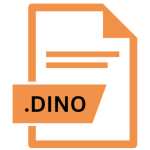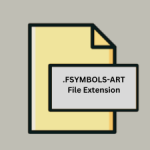.DM3 File Extension

DigitalMicrograph Image
| Developer | Gatan |
| Popularity | |
| Category | Raster Image Files |
| Format | .DM3 |
| Cross Platform | Update Soon |
What is an DM3 file?
In the realm of digital microscopy and imaging, the .DM3 file extension holds significant importance. It serves as the standard file format for DigitalMicrograph images, a proprietary format developed by Gatan, Inc. for electron microscopy data.
This article delves into the origins, structure, advantages, and drawbacks of the .DM3 file extension. Additionally, it provides detailed instructions on how to open and convert .DM3 files across various operating systems.
More Information.
DigitalMicrograph was first introduced in the late 1990s, accompanying Gatan’s line of electron microscopy instruments.
The .DM3 file format was specifically engineered to accommodate the complex data generated by electron microscopes, including images, spectra, and experimental parameters.
Its primary purpose was to provide researchers and scientists with a standardized, versatile format for storing and analyzing microscopy data, facilitating collaboration and reproducibility in scientific research.
Origin Of This File.
The .DM3 file extension finds its roots in the development efforts of Gatan, Inc., a leading manufacturer of instrumentation and software used in electron microscopy and related fields.
As electron microscopy technology advanced, there arose a need for a specialized file format capable of efficiently storing and managing high-resolution images and associated metadata.
This led to the creation of DigitalMicrograph, a software suite designed to handle electron microscopy data, with .DM3 emerging as its default file format.
File Structure Technical Specification.
The .DM3 file format is based on a hierarchical structure, incorporating both image data and metadata in a single file.
At its core, a .DM3 file comprises a header section containing essential information such as image dimensions, pixel size, acquisition parameters, and microscope settings.
Following the header, the image data is stored in a compressed format, ensuring efficient use of storage space without compromising image quality.
The technical specifications of the .DM3 format include support for multi-dimensional data, enabling the storage of not only 2D images but also spectral data, diffraction patterns, and other relevant information.
Furthermore, .DM3 files can store metadata in the form of tags, allowing for the inclusion of descriptive information and experimental parameters alongside the image data.
How to Convert the File?
Here’s a guide on how to convert .DM3 files to other formats:
- Using DigitalMicrograph: Open DigitalMicrograph, load the .DM3 file, then choose “Export” or “Save As” from the “File” menu. Select the desired format and destination to complete the conversion.
- Using ImageJ/Fiji: Open ImageJ/Fiji, import the .DM3 file, then go to “File” > “Save As” to select the output format and destination. Save the file to complete the conversion.
- Online Conversion Tools: Visit a website like Zamzar, upload the .DM3 file, choose the desired format, and start the conversion process. Once finished, download the converted file.
- Advanced Users (Command-Line): Utilize tools like dm3-converter. Install Python, download the script, then run it with specified input and output files.
Advantages And Disadvantages.
Advantage:
- High-Quality Imaging: .DM3 files preserve the integrity and fidelity of electron microscopy images, ensuring minimal loss of detail during storage and retrieval.
- Rich Metadata Support: The hierarchical structure of .DM3 files enables the inclusion of extensive metadata, facilitating data interpretation and analysis.
- Compatibility: While proprietary to Gatan’s DigitalMicrograph software, .DM3 files can be easily shared and accessed across different platforms using appropriate conversion tools.
Disadvantage:
- Proprietary Format: .DM3 files are proprietary to Gatan, limiting their compatibility with third-party software and tools.
- Storage Overhead: The inclusion of comprehensive metadata can result in larger file sizes compared to other image formats.
- Software Dependence: To fully utilize .DM3 files, users typically require access to Gatan’s DigitalMicrograph software, which may not be readily available to all researchers.
How to Open DM3?
Open In Windows
- Use Gatan’s DigitalMicrograph software, which is available for Windows. Simply double-click on the .DM3 file, and it should open in DigitalMicrograph.
- Alternatively, you can use third-party software like ImageJ or Fiji, which support .DM3 files. Open the software, then navigate to File > Open to select and view the .DM3 file.
Open In Linux
- Install GMS (Gatan Microscopy Suite) on your Linux system. GMS provides compatibility with .DM3 files. Follow the instructions provided with GMS to open and view .DM3 files.
- You can also use ImageJ or Fiji, which are available for Linux. Open the software, then go to File > Open to load the .DM3 file.
Open In MAC
- Similar to Windows, you can use Gatan’s DigitalMicrograph software, which is compatible with macOS. Double-click on the .DM3 file to open it in DigitalMicrograph.
- Alternatively, you can use ImageJ or Fiji, both of which are available for macOS. Open the software, then navigate to File > Open to load the .DM3 file.
Open In Android
- Transfer the .DM3 file to your Android device.
- Install an image viewer app from the Google Play Store that supports .DM3 files, such as Gatan Microscopy Suite Mobile or ImageJ Mobile.
- Open the image viewer app and navigate to the location of the .DM3 file to view its contents.
Open In IOS
- Transfer the .DM3 file to your iOS device via AirDrop, email, or cloud storage.
- Install an image viewer app from the App Store that supports .DM3 files or their conversion, such as ImageJ Mobile or Gatan Microscopy Suite Mobile.
- Open the image viewer app and import the .DM3 file to view its contents.
Open in Others
- For other platforms, consider using cross-platform image viewer software like ImageJ or Fiji, which are available for Windows, macOS, and Linux.
- Alternatively, you can use online image viewer tools that support .DM3 files, although this may require uploading the file to a website for viewing.













